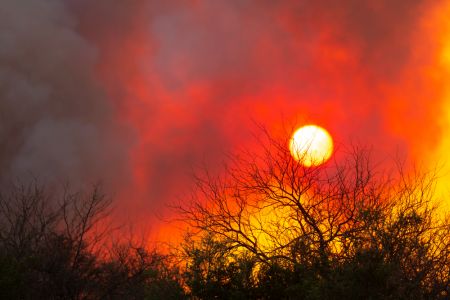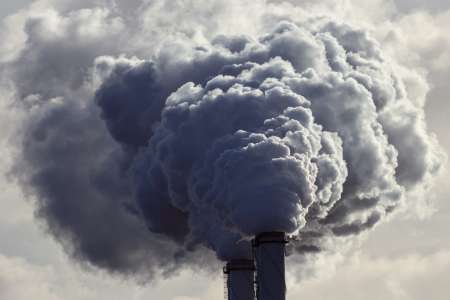Biodiversity Loss
Massive declines in species populations are growing and imposing huge costs onto every person on the planet.
02/25/2024

The Importance of Biodiversity and Why We Should Care
Biodiversity refers to the total variety of species on Earth that live in an extremely complex and interconnected web. Currently, it is under attack from climate change and global warming, pollution, habitat loss, invasive species, and overexploitation. Every species, including humans, depends on others to maintain ecological balance and support life. Unless halted, the unprecedented biodiversity loss will be an unprecedented disaster for humanity.
We don’t have to wait to see this begin. The extinction crisis is already here. According to The International Union for Conservation of Nature’s Red List of Threatened Species (IUCN 2024), over 45,300 species are currently threatened with extinction. Since the year 1500, over 800 recorded extinctions have occurred, with the actual numbers estimated to be much higher since many extinctions go unnoticed. Species are disappearing at 10-100 times the natural rate, and the pace is speeding up.
As the species are impacted, so too are the costs we all pay. Increased food prices, the spread of diseases, limited natural medical discoveries, reduced water quality, severe natural disasters, and decreased recreation options are all costing each of us. Nonetheless, the present costs will seem minuscule if we continue to ignore the issues as the upward trends continue.
The Fragility of Interconnected Systems
“We cannot predict the tipping point that will send ecosystems into total collapse, but it is an inevitable outcome if we do not reverse biodiversity loss.” — Yuangeng Huang et al., 2023
Total ecosystem collapse means mass extinctions and, quite possibly, even humans. Like all species, we rely on and must have healthy, biodiverse ecosystems for food, medicine, clean water, protection from disasters, and overall sustainability. If we destroy the complex web supporting us, the consequences we and our children face will be apocalyptic.
Coral reefs demonstrate this fragility. These vital ecosystems support 25% of marine life but are in destructive decline driven by climate change, pollution, and human activities. As reefs bleach into lifeless white skeletons, fish and marine wildlife disappear. Coastlines then erode from waves that reefs once dissipated. Entire ecosystems unravel, compromising human food supplies, economies, and lives.

When corals experience stress, they expel the algae called zooxanthellae, which is essential for their survival. This expulsion leads to bleaching, as these algae are responsible for the corals’ vibrant colors. Bleaching is often triggered by increasing water temperatures. NOOA, Public domain via flicrk.
The loss of coral reefs highlights the unpredictability of ecosystem collapse. There are over 300 species of coral. Each plays a different role in their respective ecosystem. We do not fully understand the tipping points for individual species that could undermine the whole system and result in collapse. Warming oceans’ CO2 emissions, melting polar ice, and regional impacts like pollution and overfishing, as well as other variables, are complex in their effects. We do know without any confusion that once reefs pass certain unknown thresholds, restoring them becomes extremely difficult, if not impossible. Prevention, which is developed from a better understanding of the causes, is needed. Without them, we are flying into disaster.
Other ecosystems demonstrate similar unpredictability. The Amazon rainforest recycles 20 billion tons of water vapor daily, driving rainfall patterns across South America. These water cycles also affect weather in North America, the Caribbean, and elsewhere. Deforestation could soon push it towards dieback, converting it to a dry savannah. It cannot be pinpointed exactly how much clearing will trigger the conversion from forest to savanna. Still, once it occurs, the impacts will cascade across the continent and the world, affecting food production, hydropower, and water supplies for millions.
In the Arctic tundra, thawing permafrost is unlocking long-frozen carbon and methane. This creates a dangerous feedback loop that drives further warming, the melting of more permafrost, and further releases of greenhouse gases. The tundra supports migratory birds from across continents and indigenous communities, and both are threatened. These releases of greenhouse gases join others in an ongoing and worsening worldwide disaster. All of these factors lead to increases in global warming, and if not mitigated, they also create an endless loop.
As human civilization has boomed, we’ve consumed over half the world’s land for agriculture and industry. Our numbers have exploded to 8 billion. We’ve pumped enough greenhouse gases into the air to raise global temperatures over 1°C higher than pre-industrial levels. These and other human impacts drive biodiversity declines unlike any in Earth’s history while also putting our futures at risk.
Nature’s Master Blueprint Under Siege
Earth’s biodiversity results from billions of years of natural processes that are far more complex than we currently fully understand. The research from the scientific journal PLOS Biology titled “How Many Species Are There on Earth and in the Ocean?” estimated that approximately 8.7 million species exist and that some 81% of land and 91% of ocean species still are not yet described. This is indeed nature’s grand plan, with each filling niche roles and all interconnected.
Biodiversity weaves a web of life, recycling nutrients, storing carbon, pollinating crops, filtering water, and sustaining ecosystems globally. But this critical thread is unraveling fast. It is now expected that as many as 1 million species will go extinct within decades as the planet continues to react to conditions we are largely creating. The web of life is unraveling at our peril.
To appreciate biodiversity’s importance, consider soils, which teem with microorganisms that drive nutrient cycles. According to retired nematologist, Kathy Merrifield of Oregon State University, a single teaspoon (1 gram) of rich garden soil can hold up to one billion bacteria, several yards of fungal filaments, several thousand protozoa, and scores of nematodes. All of them are busy at work as they fix nitrogen, decompose organic matter, and exchange nutrients between soil and roots to facilitate plant growth. Many, perhaps most, species remain unknown to science, yet each plays an irreplaceable part in the whole. As we lose them, soil fertility degrades, crop yields are reduced, and more and more artificial fertilizers are required.
Then there are bees, which come in over 20,000 species of all colors and sizes and have co-evolved with flowering plants for 100 million years. An interdependency led to the rise of over 400,000 plant species that support wildlife and human agriculture. One-third of food crops rely on bee pollination. demonstrating an intricate co-dependent relationship and showing why preserving biodiversity is vital. No bees means less food at higher prices, yet bees are threatened by habitat loss and pesticides, and colony collapse disorder has destroyed over 10 million hives in the US since 2006.
Adapting Too Slowly for Survival
Evolution works through minute changes in gene frequencies across generations and favors traits that confer survival advantages under new pressures. Most species can adapt to environmental changes through evolution so long as they are given time to do so. The recent, rapid changes humans introduced over the past 150 years are just too fast and have outpaced evolution, which occurs over thousands of years for most species and even longer for some, such as bacteria and viruses that evolve rapidly. The majority simply cannot adapt fast enough, leading to mass die-offs and extinctions.
The pace of current human impacts leaves no time for evolution to run its course.
An example of adaptation occurred when some moths darkened in color during Britain’s Industrial Revolution as trees were blackened by soot from extensive coal burning. This adaptation better camouflaged them from predatory birds. However, such small-scale adaptations pale compared to the extreme stressors that biodiversity faces today. Again, it must be stressed that evolution is not possible for most species in time spans measured in decades as global temperatures rise, oceans acidify, habitats shrink, and extreme weather surges.
Our Failure to Coexist Harms Us
It is easy to view biodiversity as something most often out of sight and separate from our daily lives—obscure ecosystems that we can continue to disrupt without consequences. Nothing could be further from the truth because we are embedded within and rely wholly on nature and other species. If we drive mass extinction by our actions and lack of concern, then we undermine our existence.
Continued destruction and desecration of the planet will, by 2100, bring about mass extinctions, malnutrition and starvation, extremely destructive weather, resource wars, economic decline, and societal collapse. By preserving nature, we preserve humanity. It’s that simple. And even if we could survive, do we not have a responsibility to protect the millions of species we share this planet with? Is human superiority something that trumps all else and leaves other species as inherently of less value than we are? Do our children not deserve a world that has space for all life?
Our One Shared Home
Biodiversity loss can feel abstract, but it’s already harming communities worldwide. Coastal nations like Indonesia, India, and The Philippines face intensifying cyclones as mangroves disappear. In Kenya, deforestation linked to biodiversity decline contributes to desertification, increasing conflict over scarce grazing lands. Environmental refugees already number in the millions. In the Americas, deadly forest fires, flooding, and drought are in assent because no country or area is isolated from these impacts. The existential crisis of biodiversity devastation is no longer theoretical and in the future.
Can We Solve These Issues?
Yes, if we do not delay implementing solutions! With ambition, innovation, and cooperation, we can change course, prosper, and protect all life on Earth. Efforts like restoring habitats, expanding protected areas, practicing sustainable agriculture, reducing pollution, and curbing overconsumption can give species room to recover. Preserving biodiversity will take global cooperation on an unprecedented scale. No problem facing humanity is more critical.
The hour is late, but the situation, while urgent, is not hopeless. Future generations are counting on us to rise to the challenge. For them, for me, for you, and all of us, each person has a role in driving the change we need. Together, we can build an equitable world where both humanity and nature thrive.




















